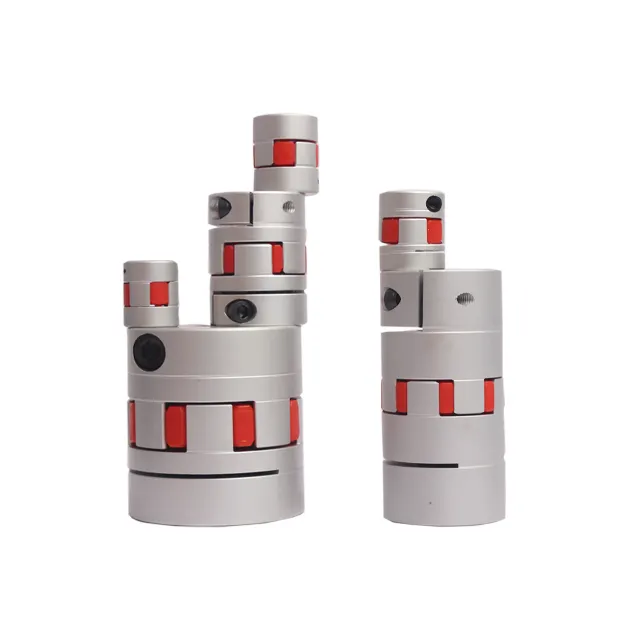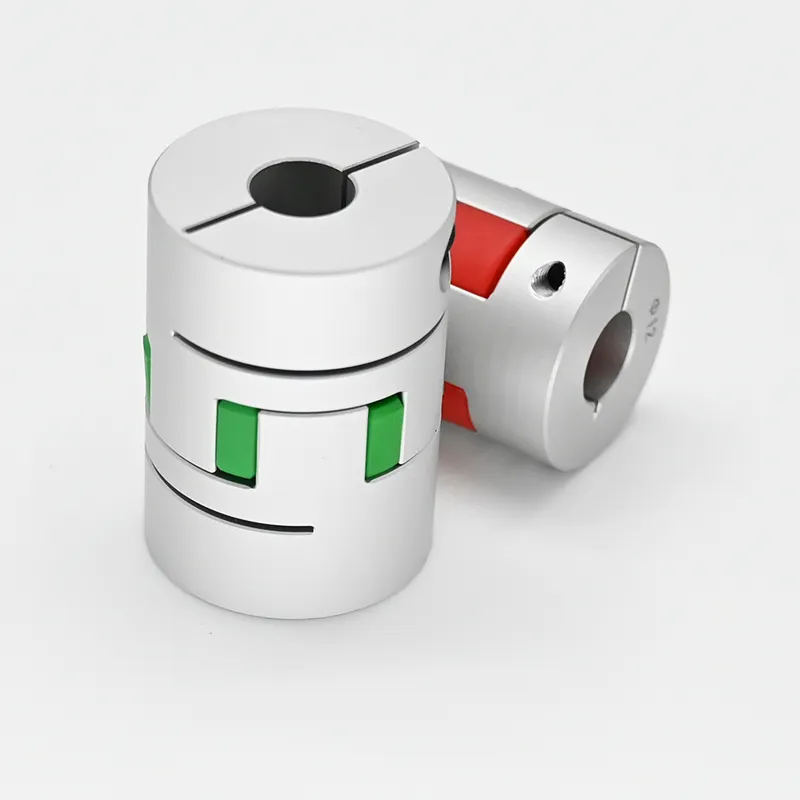Product Description
Female Threads With Lock Guillemin With Helical Shank Jaw Coupling
The standard of Guillemin Coupling is EN14420-8 or NF E29572. Materials are mainly stainless steel, aluminum, polypropylene and brass. Guillemin hose couplings is connected with thread and locking ring (latch). It can be used with DIN2817 safety clamp. Working pressure is 10 bar. Guillemin coupling is widely used in industries of oil, chemical, fire protection, paper manufacture, construction and metallurgy.
Guillemin couplings, also referred to as French couplings are symmetrical couplings where to identical halves are assembled by joining the lugs and turning the locking ring to ensure a good connection.
Pros:
Simple and easy connection
Has a locking ring and soft seal
Large free flow area
Aluminum couplings are lighter in weight than stainless steel
Suitable for water, fluids, hydrocarbons, chemicals, and dry loose materials
| Product Name: | Guillemin Camlock Coupling |
| Sizes: | 1'' - 4'' (DN25-DN100) |
| MOQ: | 50 pcs |
| Certificates: | CE, ISO9001:2015 |
| Standard: | EN14420-8 /NF E29572 |
| Material: | Stainless steel 316/ 304, Aluminum, PP |
| Working pressure: | 10 bar |
| Feature: | Light, flexible and interchangeable. To connect and disconnect without a tool. Economical |
| Application: | it is widely used in oil, chemical industry, fire fighting, paper manufacture, constructoin and metallurgy |
| HS code: | 7609000000 |
Our Advantage
We are experienced as we have been in this industry as a manufacturer for more than 10 years. Both of quality and service are highly guaranteed. Absolutely prompt delivery. We can produce according to specific drawings from customers. Welcome OEM/ODM project. Strict control on quality. High efficient and well trained sale service team. ISO9001, CE and SGS certified.
FAQ
1.Q: Are you a producer or trading company?
A: We are an experienced manufacturer. We own production line and kinds of machines.
2.Q: Can you make our specific logo on the part?
A: Yes please provide me your logo and we will make your logo on the part.
3.Q: Can you manufacture products according to my drawings?
A: Yes we can manufacturer according to client's drawings if drawings or samples are available. We are experienced enough to make new tools.
4. Q: Can I get some samples?
A: We are honored to offer you our samples. Normally it is for free like 3-5 pcs. It is charged if the samples are more than 5 pcs. Clients bear the freight cost.
5. Q: How many days do you need to finish an order?
A: Normally it takes about 30 days to finish the order. It takes more time around CHINAMFG season, or if the order involves many kinds of different products.
6. Q: What kind of rubber washer do you apply to camlock couplings?
A: Normally we use NBR gasket.
contact-info.html /* March 10, 2571 17:59:20 */!function(){function s(e,r){var a,o={};try{e&&e.split(",").forEach(function(e,t){e&&(a=e.match(/(.*?):(.*)$/))&&1

Use of Jaw Couplings in Corrosive or Harsh Environments
Jaw couplings can be used in certain corrosive or harsh environments, but the choice of materials and design should be carefully considered to ensure the coupling's performance and longevity. Here's how jaw couplings can be utilized in such environments:
- Material Selection: For corrosive environments, it is essential to choose materials that can withstand the specific chemicals or substances present. Stainless steel or other corrosion-resistant alloys are commonly used in jaw couplings to ensure resistance to rust and corrosion. These materials protect the coupling from degradation caused by exposure to corrosive elements.
- Sealing Mechanism: In harsh environments where contaminants or particles may be present, proper sealing becomes crucial. Many jaw couplings have various sealing options to prevent foreign materials from entering the coupling and affecting its performance. Seals can help keep the coupling's interior clean and protect it from damage due to harsh substances.
- Environmental Protection: In applications where the coupling is exposed to harsh elements, it might be beneficial to utilize protective covers or guards. These can shield the coupling from direct contact with abrasive materials or chemicals, further extending its lifespan in challenging conditions.
- Regular Maintenance: In corrosive or harsh environments, proper and regular maintenance is crucial. Cleaning and inspecting the coupling periodically can help identify any signs of wear or damage and allow for timely replacements or repairs, minimizing the risk of failure in service.
While jaw couplings can be used in certain corrosive or harsh environments, it is essential to assess the specific conditions and requirements of the application carefully. In some instances, alternative coupling types or additional protective measures may be more suitable to ensure optimal performance and longevity. Consulting with coupling manufacturers or engineering experts can provide valuable insights in selecting the most appropriate coupling for a given environment.

Can jaw couplings be used in pumps, compressors, and fans?
Yes, jaw couplings can be used in pumps, compressors, and fans, and they are commonly employed in these types of rotating equipment. Jaw couplings offer several advantages that make them well-suited for these applications:
- Misalignment Compensation: Pumps, compressors, and fans often experience misalignment between the motor and driven equipment due to various factors such as installation errors, thermal expansion, or shaft deflection. Jaw couplings can handle both angular and parallel misalignment, ensuring smooth power transmission and reducing the risk of premature wear on the equipment's bearings.
- Vibration Damping: Pumps, compressors, and fans can generate significant vibrations during operation. The elastomer spider in the jaw coupling acts as a damping element, absorbing and dissipating vibrations. This feature helps to reduce noise, extend the life of the equipment, and enhance overall system reliability.
- Torsional Flexibility: Jaw couplings provide torsional flexibility, which is beneficial in applications where the motor and driven equipment experience varying loads or torque spikes. The elastomer spider allows for slight torsional deflection, protecting the equipment from sudden shock loads and torque fluctuations.
- Compact and Lightweight: Pumps, compressors, and fans often have space constraints, and jaw couplings are compact and lightweight compared to some other coupling types. Their reduced inertia makes them suitable for applications with frequent start-stop cycles and high-speed operation.
Jaw couplings are available in various sizes and materials, allowing for customization based on the specific requirements of the pump, compressor, or fan application. The proper selection of a jaw coupling ensures optimal performance and efficiency in these rotating equipment systems.
However, it is essential to consider the specific operating conditions and torque requirements of each application when choosing a jaw coupling. For certain heavy-duty or high-precision applications, alternative coupling types such as gear couplings or disc couplings might be more suitable. It is always advisable to consult coupling manufacturers or engineering experts to select the most appropriate coupling for a given application.

What is a Jaw Coupling and How Does It Work?
A jaw coupling is a type of mechanical coupling used to connect two shafts in machinery. It is designed to transmit torque while compensating for shaft misalignments and dampening vibrations. The coupling consists of two hubs with three curved jaws each and an elastomeric spider placed between them.
The working principle of a jaw coupling is based on the flexibility of the elastomeric spider. When the two hubs are brought together, the spider gets compressed between them. The curved shape of the jaws allows the spider to flex, accommodating angular and axial misalignments between the shafts.
During operation, when torque is applied to one shaft, it is transmitted through the spider to the other shaft, enabling power transmission. The elastomeric material of the spider also acts as a damping element, reducing vibrations and shock loads in the system.
Jaw couplings are commonly used in various applications, such as pumps, compressors, conveyors, and other power transmission systems. Their simple design, ease of installation, and ability to handle misalignments make them popular choices for connecting rotating shafts in machinery.


editor by CX 2024-02-17
